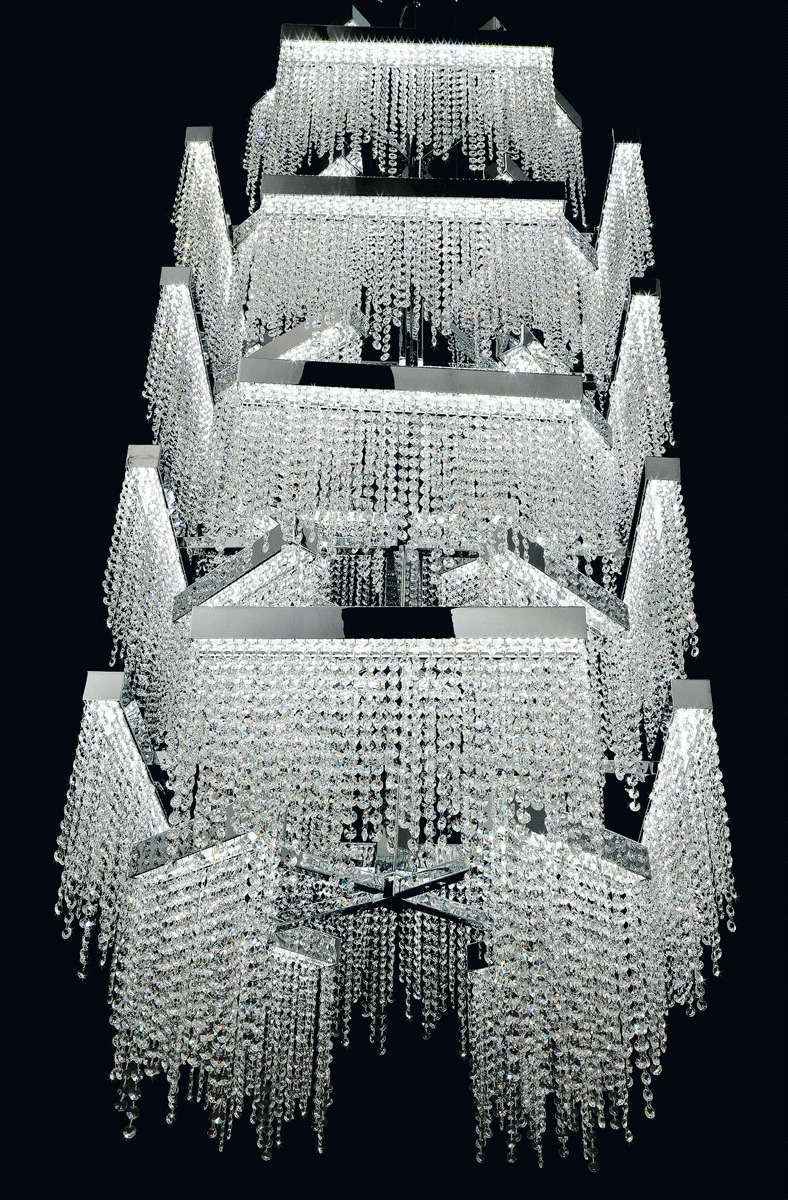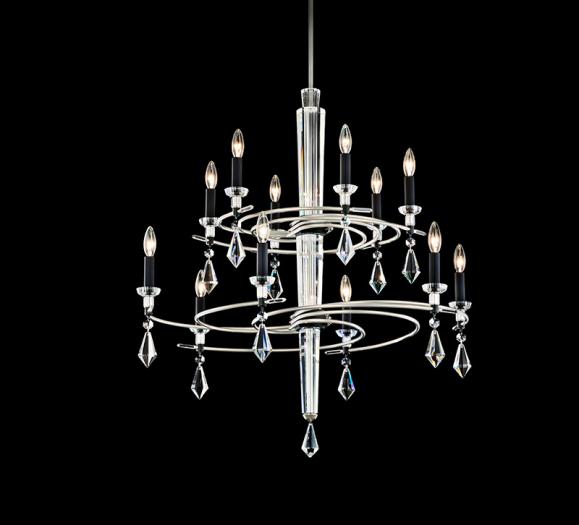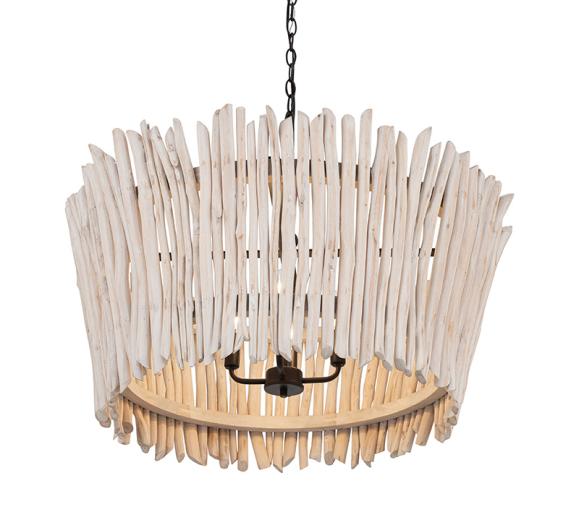Crystal chandeliers have come a long way from the days as traditional, stately pieces only enjoyed in the most formal of spaces and positioned to impress guests in the dining room or the foyer. Crystal’s use in various lighting applications of all shapes and sizes means its sparkling, elegant affect can be enjoyed all over the home.
More crystal means more cleaning, but it doesn’t have to be too taxing if you follow these few simple guidelines to keep crystal looking its best. Make sure to educate customers on the cleaning process and set an example for them by keeping the crystal in your showroom bright and gleaming.
How to Clean a Crystal Chandelier
If you do not wish to remove the crystal components from the piece, you can use a spray. After the piece is sprayed, wipe off the solution with white cotton gloves. Crystal chandelier manufacturer Schonbek recommends a solution of one part isopropyl alcohol to three parts distilled water, while Waterford’s chief lighting designer Billy Canning says hot soapy water will do the trick. Both agree that special cleaning formulas aren’t needed.
“A real no-no in the area of cleaning chandeliers … is if the chandelier is finished with a traditional polished gold finish or polished silver finish but it’s not stainless steel, people will use these sprays that you can buy,” says Eileen Schonbek Beer, Creative Director for Schonbek Worldwide Lighting. “Basically, what the manufacturers say is you spray the chandelier and let the stuff drip off and that cleans the crystal. But in fact what it does is ruin the frames of the chandelier.”
If more aggressive cleaning is needed, the crystal parts will need to be removed from the frame. The crystals can then be hand-washed in soapy water, rinsed clean and dried with a cloth. Schonbek provides trim diagrams that detail reassembly of the chandelier.
For dusting between cleanings, Schonbek recommends using a feather duster, lambswool duster or a make-up brush.
How Often to Clean Crystal Chandeliers
In general, crystal should be cleaned every two to six months. The frequency of cleaning required depends on where it is used and how easy it is to get to the piece. According to Canning, extremely large pieces like 20-foot chandeliers can get away with being cleaned only once a year.
Since crystal lighting is popping up in every room of the house these days, some pieces may need more frequent cleanings based on their locations. Chandeliers used in kitchens will need more detailed cleaning due to oil and grease buildup, as well as dust sticking to the components due to moisture from sinks and stoves.
“The beauty of crystal, of course, is the prismatic refraction of the light passing through the crystal ornament,” says Beer. “So the minute it’s got any kind of residue of dust or even moisture -- like in moist climates in Florida — the humidity will cause dust to adhere to the crystal and the salt in the air will kind of make it cloudy. So you actually have to clean crystal pretty regularly.”
Maintaining a regular cleaning schedule for crystal will always keep it sparkling. Yet if a piece is neglected, all it takes is a little extra effort with the methods listed above and it will be good as new.
“In my personal experience, I have been asked by many auction houses to identify Waterford products many times,” says Canning. “In most cases the difficulty with identification would have been that the chandelier was allowed to get dirty and the crystal would appear dull. But in all cases, when properly cleaned, they can look as good as the day they were bought.”
For the Chore-Challenged
For customers who aren’t ready to get into the nitty gritty of cleaning their crystal by hand, suggest the Da Vinci chandelier from the Geometrix collection by Schonbek. The crystals stay attached to a stainless steel frame that can be placed directly in the dishwasher. The Da Vinci is available in a 10-inch or 36-inch diameter. The only Da Vinci that won’t make to the dishwasher is the dramatic 5-foot model.







